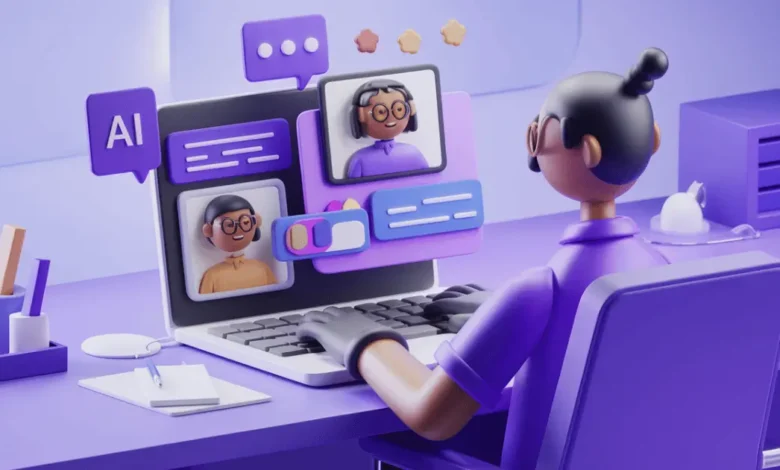Using AI Presenters to Bridge Remote Team Communication

The transformation of the workplace in the digital age has been rapid and profound. Remote work, once a luxury or niche arrangement, has become a mainstream practice. As businesses adapt to this new model, the challenges of maintaining effective communication across geographically dispersed teams have come to the forefront. One of the most promising solutions lies in leveraging artificial intelligence—specifically, AI presenters—to enhance and streamline remote team communication.
The Evolution of Remote Work and Communication Barriers
The rise of remote work has ushered in both flexibility and complexity. While employees enjoy the benefits of working from different locations, time zones, and schedules, teams often struggle with maintaining clarity, engagement, and collaboration. Traditional communication methods, such as emails, text messages, and even video calls, have their limitations. Misunderstandings can occur, important messages may be lost in translation, and asynchronous communication often leads to delays.
In this context, AI presenters emerge as a vital tool for bridging the communication gap. These virtual avatars or digital spokespersons use advanced technologies like natural language processing, machine learning, and speech synthesis to deliver messages in a consistent, engaging, and human-like manner.
What Are AI Presenters?
AI presenters are digital avatars powered by artificial intelligence. They are capable of mimicking human speech, facial expressions, and gestures, providing a realistic and dynamic experience that enhances viewer engagement. These presenters can be customized to suit different corporate tones and visual identities, making them highly adaptable for various industries and communication needs.
They can deliver pre-scripted content, translate messages into multiple languages, and even adjust their delivery based on the target audience’s preferences. In essence, AI presenters serve as a scalable, always-available communication asset that businesses can deploy for internal briefings, training sessions, project updates, and more.
Enhancing Internal Communication with AI Presenters
One of the primary challenges remote teams face is maintaining consistent and clear internal communication. AI presenters can standardize messaging across the board, ensuring that every team member receives the same information without distortion.
For instance, when announcing new company policies, launching initiatives, or updating teams on project milestones, AI presenters can deliver the message with clarity, consistency, and even in multiple languages if needed. This reduces the chances of miscommunication and ensures that everyone is on the same page.
Moreover, the visual and auditory engagement offered by AI presenters is far superior to reading long emails or text messages. Employees are more likely to pay attention and retain information presented in a video format that includes a lifelike avatar conveying the message with appropriate tone and expression.
Breaking Language and Cultural Barriers
In global teams, language differences can pose significant challenges. Miscommunication due to language barriers can lead to errors, delays, and frustration. AI presenters can be programmed to communicate in different languages with native-like pronunciation, ensuring that messages are accessible to all team members, regardless of their location or native tongue.
Additionally, AI presenters can be customized to align with various cultural norms and business etiquettes, making them more relatable and acceptable to diverse audiences. This cultural adaptability fosters inclusivity and strengthens team cohesion.
Facilitating Onboarding and Training
Onboarding new employees in a remote setup can be particularly challenging. New hires often miss out on the face-to-face interactions and informal learning opportunities that come with in-office environments. AI presenters can bridge this gap by delivering interactive onboarding sessions, explaining company policies, and guiding new employees through processes in an engaging and consistent manner.
Similarly, for ongoing training and professional development, AI presenters can deliver modules that are standardized, scalable, and available on-demand. Employees can access these sessions at their convenience, ensuring flexibility without compromising on the quality of learning.
Improving Engagement in Remote Meetings
Remote meetings often suffer from low engagement, especially when participants are passively listening to long monologues or reading through static slides. AI presenters can transform these meetings by serving as dynamic hosts or co-presenters who guide discussions, summarize key points, and maintain a lively pace.
By incorporating AI presenters into virtual meetings, teams can create a more interactive and stimulating environment. This, in turn, enhances attention spans, encourages participation, and improves the overall effectiveness of remote collaboration.
Supporting Asynchronous Communication
One of the major advantages of AI presenters is their ability to support asynchronous communication. In remote teams spread across different time zones, scheduling real-time meetings can be difficult. AI presenters can deliver recorded messages that team members can watch at their convenience, ensuring that communication is not hindered by time constraints.
Asynchronous video updates from AI presenters can include project briefings, performance reviews, or even motivational messages from leadership. These updates can be accessed multiple times, ensuring that the content is well understood and retained.
Enhancing Feedback Mechanisms
Feedback is a crucial element of team growth and development. In remote settings, providing and receiving feedback can be awkward or ineffective, especially when conveyed via text. AI presenters can deliver feedback in a more human-like and empathetic manner, helping recipients better understand the message and respond constructively.
For example, managers can use AI presenters to share performance evaluations, highlight achievements, and suggest areas for improvement. The tone and delivery can be tailored to ensure that the feedback is constructive and positively received.
Integrating AI Presenters with Other Tools
To maximize the benefits of AI presenters, businesses can integrate them with other communication and productivity tools. For instance, pairing AI presenters with a screen recorder allows teams to create comprehensive video messages that include both visual walkthroughs and engaging avatar narration. This is particularly useful for tutorials, product demos, and technical training.
Integration with project management platforms, CRM systems, and HR tools can further streamline workflows and improve information dissemination across teams.
Addressing Privacy and Ethical Considerations
While AI presenters offer numerous advantages, it is important to consider privacy and ethical concerns. Businesses must ensure that the use of AI presenters complies with data protection regulations and respects employee privacy. Transparency in how these tools are used, along with clear communication of their purpose, is essential to building trust within the team.
Moreover, ethical use of AI requires that these tools are not used to replace human interaction entirely but rather to augment and enhance communication where human presence is limited or impractical.
Future Outlook: AI and the Evolving Remote Workplace
As AI technology continues to advance, the capabilities of AI presenters will only grow. Future developments may include real-time translation, emotional intelligence, adaptive learning, and personalized content delivery. These advancements will further enhance remote team communication and collaboration.
In a world where hybrid and remote work models are here to stay, organizations that invest in innovative communication tools like AI presenters will be better positioned to foster connected, informed, and motivated teams.
Conclusion
The shift to remote work has underscored the need for effective communication solutions that transcend traditional limitations. AI presenters offer a powerful way to bridge the gaps created by physical distance, time zones, and language barriers. By delivering messages with clarity, consistency, and engagement, AI presenters empower teams to collaborate more effectively, stay aligned, and achieve their goals.
For organizations seeking to enhance their remote communication strategy, AI presenters—especially when combined with tools like screen recording—present a forward-thinking solution that brings human-like interaction into the digital workspace. Embracing this technology can transform not only how teams communicate but also how they connect and grow together in a virtual world.



